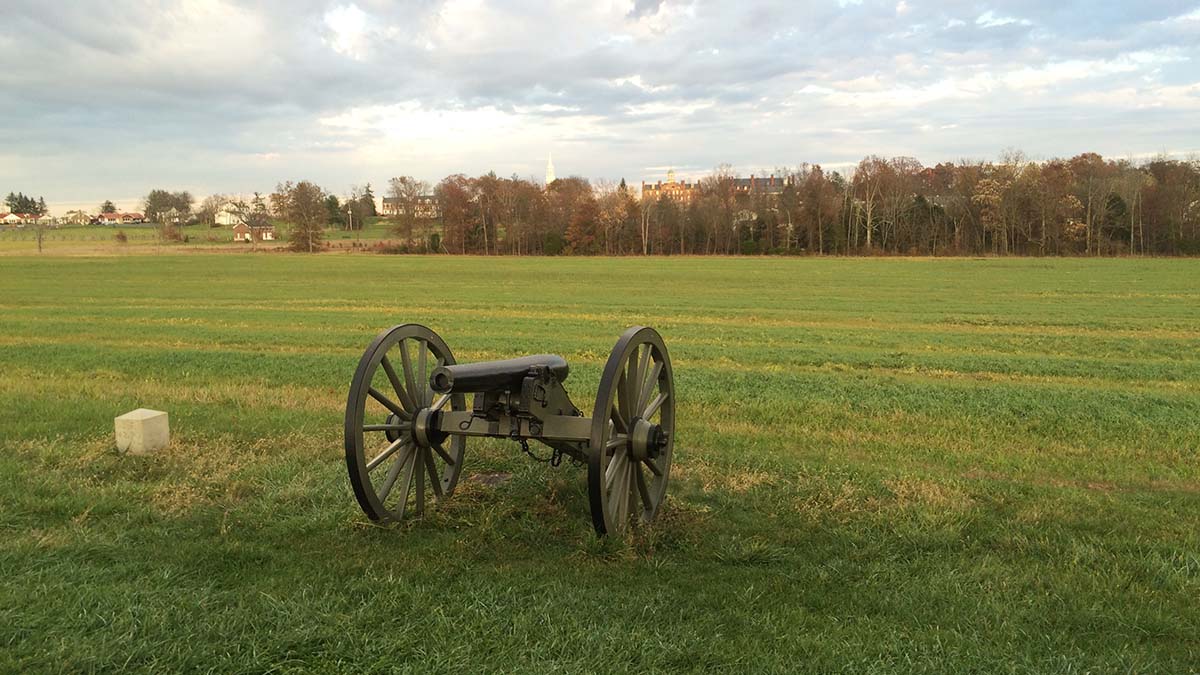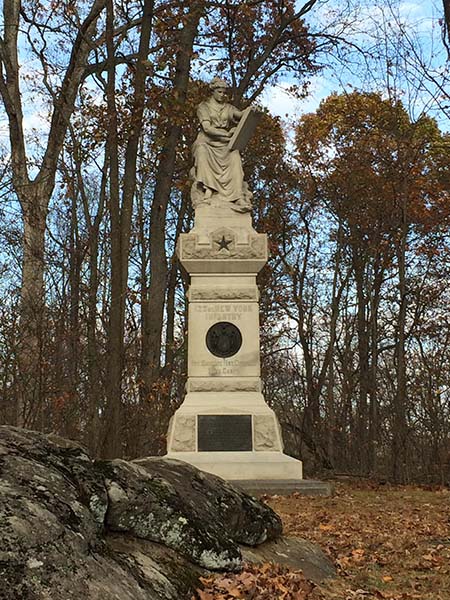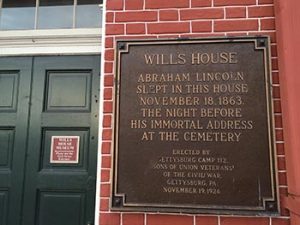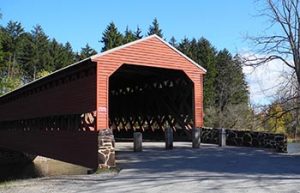
by Susmita Sengupta
In the years 1861-1865, the United States fought what is known as the greatest war in American history, the Civil War. It was a war between the free Northern states also called the Union states and the slave holding southern states also known as the Confederate states of America. At stake were the issues of states’ rights versus federal rights and the abolishing of slavery. Abraham Lincoln had just been elected President in 1860 and he was an abolitionist. The Confederate states were afraid that life as they knew it was in danger and they fired the first shots even as Lincoln was taking office in March 1861, thus heralding the beginning of the Civil War.
Of all the various places that the war was fought, Gettysburg, in Adams County in the state of Pennsylvania, stands out for very important reasons. The battle fought here was not only the bloodiest battle of the Civil War but also became the turning point in United States history.
Our family decided to visit this historic place on a fall weekend trip, the primary focus definitely being the Gettysburg Battlefield.
We started our tour at the Visitors Center where there are a multitude of options on how one wants to experience the battlefield and its monuments. From personalized guided tours in your car to guided bus tours to bike rides to augmented reality tours using a rented iPad, the choices are numerous. We decided to do it the old fashioned way, driving on our own through the battlefield using the official map and guide.
 The Gettysburg Battlefield spreads out over about a twenty five square mile area and is dotted with monuments, cannons, and markers identifying the historic events that unfolded here from July 1-3, 1863. No matter the kind of tour one decides to undertake, visiting the site is an emotional experience. The self-guided tour is beautifully organized and one can easily follow the entire sequence of events of those three days chronologically by following the map provided at the Visitors Center. With time on our hands, we decided to spread out our tour over the whole day by first just doing a drive by through the entire national park followed by time spent at the museum and visitors center and then returning back to the battlefield to stop at various monuments for a detailed and closer look.
The Gettysburg Battlefield spreads out over about a twenty five square mile area and is dotted with monuments, cannons, and markers identifying the historic events that unfolded here from July 1-3, 1863. No matter the kind of tour one decides to undertake, visiting the site is an emotional experience. The self-guided tour is beautifully organized and one can easily follow the entire sequence of events of those three days chronologically by following the map provided at the Visitors Center. With time on our hands, we decided to spread out our tour over the whole day by first just doing a drive by through the entire national park followed by time spent at the museum and visitors center and then returning back to the battlefield to stop at various monuments for a detailed and closer look.
At the Visitors Center, the principal attraction is the Cyclorama painting platform, a truly massive 360 degree oil painting by Paul Philippoteaux from the 1880s that illustrates Pickett’s Charge from the third day of the Battle of Gettysburg. While viewing the painting, I felt as if I had a front seat to the eventful happenings of that day. On the third day of the battle, Confederate Gen. Robert E. Lee and his troops started an infantry assault on the Union troops of Maj. Gen. George G. Meade at Cemetery Ridge. The attack was led by Maj. Gen. George Pickett and the Confederates were driven back and they had to withdraw. They suffered a decisive defeat that concluded the Battle of Gettysburg. For history aficionados, the Gettysburg Museum at the Visitors Center is a treasure trove of information and one can easily spend a couple of hours exploring the various galleries. These galleries tell the story of the Civil War and the Battle of Gettysburg through exhibits, artifacts and interactive visuals from the viewpoints of everyone affected by the war.
Gettysburg is equally famous around the world for President Abraham Lincoln’s “Gettysburg Address”, a 272 word speech that he delivered here in November 1863 at the dedication ceremony of the Soldiers’ National Cemetery at the battlefield. Considered a landmark speech of American history, it reaffirms the importance of human equality as defined by the Declaration of Independence and restructures the Civil War as a struggle for the same.
 At the Wills House Museum, located in downtown Gettysburg, visitors can see the room where Lincoln stayed the night and prepared the final draft of Gettysburg Address. The house was the home and office of David Wills, an attorney who was the driving force behind the creation of the National Cemetery.
At the Wills House Museum, located in downtown Gettysburg, visitors can see the room where Lincoln stayed the night and prepared the final draft of Gettysburg Address. The house was the home and office of David Wills, an attorney who was the driving force behind the creation of the National Cemetery.
A little crunched for time, we were unable to tour the house but decided to visit the Shriver House museum instead. This museum that offers a civilian’s perspective of the Civil War is the 1860 home of George and Hettie Shriver. We walked through the beautifully restored home and in the process learned about the effects of that war on the life of the regular people of Gettysburg. I discovered that George Shriver volunteered to fight for the Union troops in 1861 while his wife Hettie and their two daughters continued with their life at this house. When the war came to Gettysburg in July 1863, Hettie decided to move to her parents’ farm a few miles away with her children. What she didn’t know is what we know now. That farmhouse was situated between two hills known as Big Round Top and Little Round Top, the two sites where some of the worst fighting took place. They lived through the battle in that house and returned back to their home on July 7th and found out that their home was now being used as a hospital and had been taken over by Confederate soldiers. It was fascinating to visit the attic and hear about the Confederate sharpshooters who had taken up positions there to fire at the Union soldiers and two of whom died there during the siege.
 If you get tired of all the Civil War related sightseeing, Gettysburg also offers some other places of interest. One such place is the Sachs Covered Bridge, one of four such bridges in Adams County and arguably the prettiest. Though this bridge too has a war related history, the Confederate soldiers retreated by marching across it, what catches your eye here is the beauty of this wooden bridge and the surrounding landscape. Although the effects of autumn weather were not yet seen, I could imagine how pretty the entire place would look once the trees showed their dazzling fall colors.
If you get tired of all the Civil War related sightseeing, Gettysburg also offers some other places of interest. One such place is the Sachs Covered Bridge, one of four such bridges in Adams County and arguably the prettiest. Though this bridge too has a war related history, the Confederate soldiers retreated by marching across it, what catches your eye here is the beauty of this wooden bridge and the surrounding landscape. Although the effects of autumn weather were not yet seen, I could imagine how pretty the entire place would look once the trees showed their dazzling fall colors.
The next day we decided to take in the other attractions of Gettysburg, namely its charming downtown area filled with cafes, restaurants and gift shops selling folk art and Americana. Of course there are also stores selling authentic Civil War memorabilia and artifacts and we found a lot of antique stores as well.
Gettysburg turned out to be an ideal weekend vacation destination with a mix of history, culture and shopping but one can also spend a more leisurely week visiting other places of interest such as the Eisenhower National Historic Site, the weekend retreat of President Eisenhower and his wife Mamie that also served as his home after his presidency and the Hall of Presidents and First Ladies. A longer and more leisurely visit would also be perfect to explore the natural splendor of the surrounding Adams County.
If You Go:
National Park Service Gettysburg
About the author:
Susmita Sengupta is a freelance writer who loves to travel. She and her family have traveled to various parts of the USA, Canada, Europe, the Caribbean, Middle East, Southeast Asia and India. She resides in New York City with her family.
All photographs by Susmita Sengupta
- One of the many cannons at the Battlefield
- Monument dedicated to soldiers from New York
- Wills House exterior
- Sachs Covered bridge





